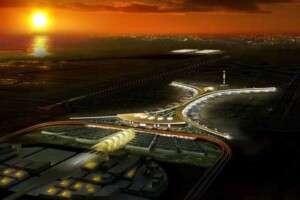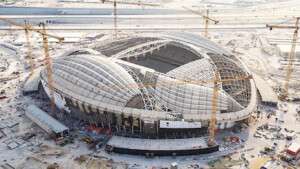Understanding the link between architecture and sex requires diving into the depths of human history, where architecture played a role in shaping and reflecting sexual and cultural relations. From Ottoman architecture, which designed spaces such as the Haremlik specifically for sexual life and sultan privacy, to modern salons that dealt with sex in a more liberal and artistic manner, architecture revealed manifestations of desire and sensuality.
Articles on architecture from magazines such as Playboy in the 1960s bring to mind how interior design and furniture were not just functional elements, but rather reflected a sensual lifestyle seeking beauty and visual pleasure. The lover’s optimum ceiling, perhaps intended to direct movement and gaze, reflects how architecture can be a silent partner in erotic encounters.
On the other hand, the historical continuity of architecture is evident in the way it embraces and shapes the sexual aspects of life. Modern architecture, with advances in technology and changes in social perceptions, allows for the expression of sexuality in more subtle and personalized ways. Series like “Sex and the City” play a role in shaping our understanding of the city as a sexual space, where place is not just an element but an integral part of the sexual narrative.
Therefore, we cannot separate architecture from the sexual dimension of human life, as it is a mirror that reflects how we live, love, and express our deepest desires and lusts. Architecture is the framework within which our most private encounters take place, and is therefore an integral part of the human sexual experience
When we explore organic forms in architecture, we cannot overlook the echoes left by ancient classical statues that expressed human appreciation for physical beauty. These statues, which depicted human forms with extreme precision, reflected the aesthetic values and ideals of their time. Over time, these interests moved to architecture, where designers began to develop architectural forms that mimic the fluidity and dynamism of the human body.

In the study of the new Jeddah Airport, we find a unique example that reflects the intersection between architecture and human perceptions. Although the designer may have denied any intended sexual references, human instinct and personal experiences can play a role in interpreting architectural forms. Jeddah Airport shows how bold designs can provoke different interpretations, with some comparing the control tower to masculinity and other shapes to femininity. These interpretations are not necessarily the product of the designer’s intention, but rather a reflection of humans’ innate tendencies to search for meaning and familiar connections in the shapes around them. This debate highlights the challenge that architects face in balancing artistic creativity and diverse public interpretations, enriching the debate about the role that architecture plays in shaping and reflecting cultural and social identity.
Baqnah, a cleric, put in the video, the recording of which shows that he prepared with great care and illustrations, that the blue and red colors that were placed at the airport represent women and men, even though the illustration does not contain red, but rather orange.
He explained with his eloquence that the West, with such designs, stems from pagans, desires, and what they call the liberation of women until they become rebellious. He wondered whether their dream of building their gods on the island of Islam would come true.
He brought with him a geometric shape representing a woman lying down with an opening in the place of the vulva and said that this was the airport. Then he brought a geometric column that he said was the control tower, and he lifted it from its place and took it to the opening and placed it in it, saying that this was exactly what was intended. The man sought refuge in God at the end of the clarification.
Recent technological advances, especially with 3D rendering techniques, have given designers the ability to reshape spaces in ways that celebrate the body’s natural curves and lines. These new forms may sometimes provoke interpretations that stem from human emotion, just as some buildings are seen to represent the curves of the female body, showing a juxtaposition of emotional and physical construction.
The controversy over Al Wakrah Stadium, designed by Zaha Hadid, is a prime example of how architectural forms can be interpreted. Although Zaha Hadid’s organic designs are characterized by fluidity and mathematical complexity, some social interpretations have seen them as going beyond geometric form to have sexual connotations. These observations reflect how architects can face unique challenges when architectural forms meet personal and cultural perceptions.
The stadium designed by Zaha Hadid and which gained attention for its unique design is Al Wakrah Stadium in Qatar. Controversy arose due to public reactions to its resemblance to female genitalia. But Zaha Hadid strongly denied that the design was intended to imitate any of these shapes. The stadium’s design was inspired by the sails of traditional dhows, reflecting the maritime heritage of Al Wakrah and Qatar as a whole. The structure’s fluid form is a hallmark of Hadid’s design ethos, which often includes sinuous shapes and innovative space formations. The stadium was one of the venues that hosted the 2022 FIFA World Cup, showcasing Hadid’s pioneering approach to architectural form that often pushes the boundaries of imagination and function, intersecting with the world of organic and human forms.
Ultimately, sex remains a fundamental element of the human experience, evident in the search for privacy and concealment, needs that architectural space meets. Architecture, in all its dimensions, blends with humanity and reflects the deepest desires and requirements, including sexual ones. We invite you to express your opinions and share your interpretations of how organic forms in architecture influence your personal experiences and perceptions.
The aforementioned exhibition seems to present an interesting idea regarding how architecture affects our personal and sexual experiences, and raises questions regarding the relationship between gender and the spaces in which we live. For example, the exhibition examines the theoretical works of Claude Nicolas Ledoux and his visualizations of the Temple of Pleasure, which show how ecological spaces can be dedicated to sexual pleasure.
On the other hand, the book, Desire: Architecture and Sexuality, provides a comprehensive look at how architecture has shaped our sexual experiences throughout history, pointing out how the designs of some places, from the Panopticon to pornographic cinemas, carried with them levels of desire and sexual appeal.
Asking whether architecture shapes desire or vice versa opens the door to thinking about how architecture influences our sexual behavior and experiences. The exhibition presents a discussion of the impact of male hegemony in architecture and how that hegemony may impact women’s sexual experiences within spaces designed by men.
“The ‘Desire and Architecture’ exhibition in Barcelona explores the multiple ways in which architecture and gender intersect, offering an unusual view of architectural spaces as arenas for sexual expression. This investigation brings into question traditional gender roles and questions the impact of male dominance on women’s sexual experiences within these spaces. Through An exhibition covering perceptions of pleasure spaces over 300 years, ‘Desire and Architecture’ sheds light on the ways in which buildings can evoke and respond to our deepest desires














